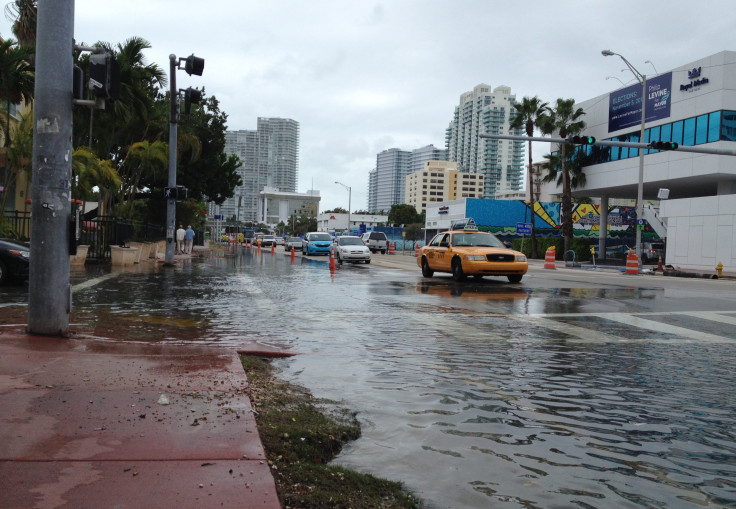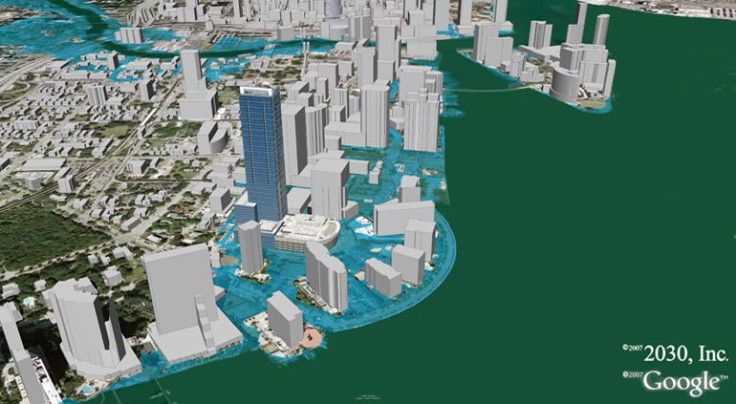Climate Change Fears: South Florida City Wants To Split With North, Form 51st State

South Florida lawmakers are proposing to sever ties with the northern counties and form the 51st American state. The political stunt is an attempt to draw attention to the dangers that low-lying communities face from climate change. The measure’s backers charge that state politicians aren’t doing enough to protect the southern half of Florida from impending sea level rise and increased flooding. The solution? Go it alone.
Commissioners from the City of South Miami, a tiny suburb in Miami-Dade County, approved a resolution earlier this month that calls for dividing Florida into northern and southern chunks. The 24 counties that would comprise South Florida encompass about 40 percent of Florida’s land and are home to 13.4 million people, or about two-thirds of the state’s population.
“The creation of the 51st state, South Florida, is a necessity for the very survival of the entire southern region of the current state of Florida,” says the measure, which passed with a 3-2 vote on Oct. 7.
Walter Harris, the vice mayor of South Miami, said he proposed the resolution because policymakers in Tallahassee -- a city so far north it's almost in Georgia -- aren’t properly representing the southern part of the state or addressing its concerns when it comes to rising sea levels, reported the Sun Sentinel of Fort Lauderdale, a major newspaper in southeast Florida.
“We have to be able to deal directly with this environmental concern, and we can’t really get it done in Tallahassee,” Harris told the paper.
According to the commission, the area that would become North Florida is about 120 feet above sea level on average. In South Florida, average elevation is only 15 feet above sea level, and many sections -- including heavily populated Miami-Dade, Palm Beach and Broward Counties -- are just five feet high or less. And much of southern Florida sits atop porous rock, making it easier for ocean water to seep up through the ground and flood inland areas as well.
With sea levels speculated to rise by 3 to 6 feet by the end of the century because of climate change, most of Florida’s southern tip could soon be under water, climate scientists have warned.


Coastal communities across the United States are facing similar risks as the ocean warms and expands and glaciers melt. New York City could face up to 2.5 feet of sea level rise by the 2050s, which would put nearly a quarter of the Big Apple in a so-called “100-year” floodplain, according to the city’s official climate projections. Louisiana could lose some 2,000 square miles of its coastal landscape by the end of the century as sea levels in the Gulf of Mexico jump by as much as 4.3 feet, federal scientists have predicted. In Norfolk, Virginia, encroaching waters are already causing parts of the city to sink.
South Miami’s city commission has directed its clerk to send copies of the resolution to all the county and city governments within the proposed borders of South Florida. Florida voters and the U.S. Congress would ultimately need to approve dividing the state, CNN noted.
© Copyright IBTimes 2024. All rights reserved.




















